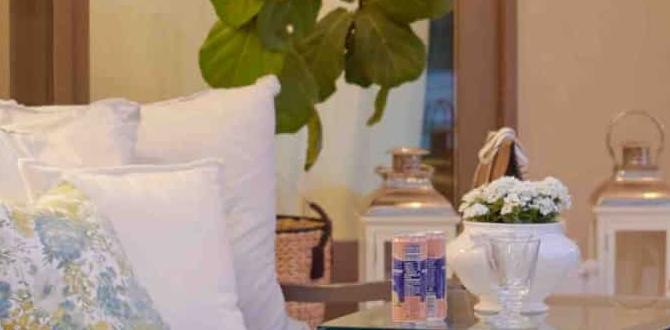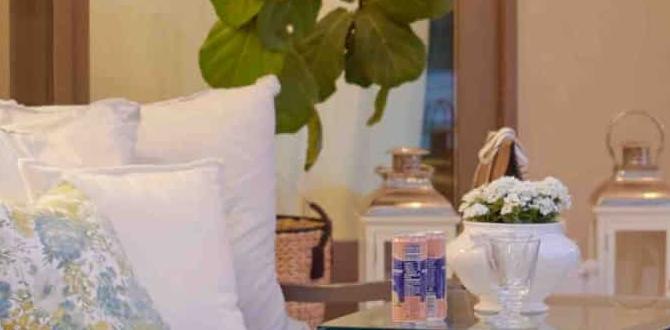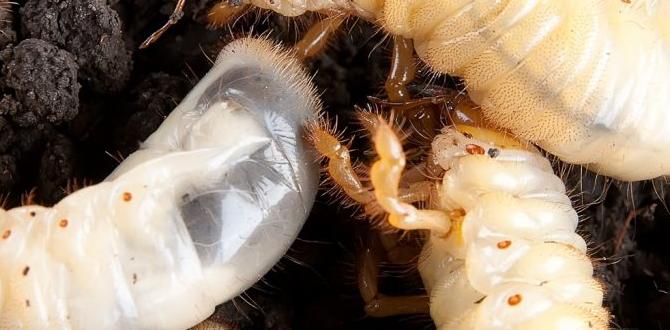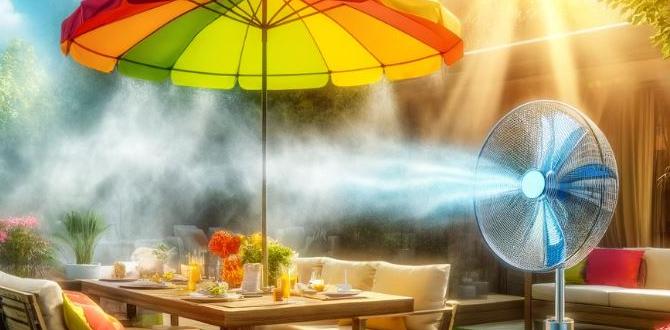Your anthurium can thrive indoors with the right care! Provide bright, indirect light, consistent moisture without waterlogging, and moderate humidity. Keep temperatures between 65-80°F and feed with a balanced liquid fertilizer during the growing season. Watch for pests and enjoy those vibrant, waxy blooms year-round!
Hello greener living friends! Are you enchanted by the striking, heart-shaped blooms of the anthurium plant? They add such a tropical flair to any indoor space, don’t they? But sometimes, keeping those glossy spathes and lush leaves looking their best can feel like a puzzle. Maybe yours have been looking a little sad, their colors not as vibrant, or perhaps you’re just starting your anthurium journey and want to get it right from the get-go. Don’t you worry one bit! Caring for anthuriums indoors is totally achievable, even for beginners. We’re going to break it down into simple, step-by-step actions that will have your anthurium blooming with confidence. Get ready to unlock the secrets to a happy and healthy anthurium!
Unveiling the Anthurium: A Tropical Gem
Anthuriums, often called ‘Flamingo Flowers’ or ‘Painter’s Palette,’ hail from the tropical rainforests of the Americas. Their most distinctive feature is the brightly colored, waxy spathe (often mistaken for a petal) that surrounds a spadix (the true flower). These stunning plants are more than just a pretty face; they’re a fantastic way to bring a piece of the tropics into your home. However, replicating their native environment can be tricky indoors, leading to common care challenges like yellowing leaves or lack of blooms. This guide is designed to simplify the process, ensuring your anthurium not only survives but thrives.
Light: Finding the Perfect Glow for Your Anthurium
Light is one of the most crucial elements for anthurium health and bloom production. These plants love bright light, but direct, harsh sunlight can scorch their delicate leaves. Think of the dappled light they’d receive under a forest canopy – that’s your goal!
Ideal Lighting Conditions
- Bright, Indirect Light: This is the sweet spot. Position your anthurium near an east-facing window where it will get gentle morning sun, or a few feet back from a south or west-facing window.
- Avoid Direct Sun: A sudden blast of direct sunlight, especially during the hot afternoon hours, can cause brown spots and crispy edges on the leaves.
- Signs of Too Little Light: If your anthurium isn’t blooming and its leaves are a deep, dark green with little new growth, it might be craving more light.
- Signs of Too Much Light: Yellowing leaves, pale or bleached-looking spots, or a reddish tint on the leaves can indicate it’s getting too much direct sun.
Sometimes, even with the best window placement, your home might be a bit dim. Don’t fret! You can supplement natural light with grow lights. Full-spectrum LED grow lights are energy-efficient and provide the balanced light spectrum anthuriums need. You can find great options on gardening supply websites or even larger online retailers. For instance, a simple LED grow bulb can be screwed into a standard lamp fixture, providing targeted light without taking up much space.
Watering: The Art of Moist, Not Soggy, Soil
Watering is often where beginners stumble with anthuriums. They like consistently moist soil but absolutely despise sitting in soggy conditions, which can quickly lead to root rot. It’s a delicate balance, but totally achievable!
How Often to Water
- Check the Soil: The best way to tell if your anthurium needs water is to feel the top inch or two of the soil. If it feels dry to the touch, it’s time to water. If it feels moist, hold off.
- Seasonal Adjustments: You’ll generally need to water more frequently during the active growing season (spring and summer) and less often in the fall and winter when the plant’s growth slows down.
- Water Thoroughly: When you do water, make sure to water until water drains out of the bottom of the pot. This ensures all the roots get moisture. Discard any excess water that collects in the saucer after about 30 minutes to prevent the roots from sitting in water.
Water Quality Matters
Anthuriums can be sensitive to the chemicals found in tap water, such as fluoride and chlorine. If you notice browning leaf tips or edges, your water might be the culprit. Try using filtered water, distilled water, or rainwater. If using tap water, let it sit out overnight to allow some of the chlorine to dissipate. This simple switch can make a big difference in leaf health!
Humidity: Creating a Tropical Oasis
Native to humid rainforests, anthuriums love a good dose of moisture in the air. Dry indoor air, especially common in homes with heating or air conditioning running, can lead to crispy leaf edges and buds that fail to open. Fortunately, there are several easy ways to boost humidity around your plant.
Boosting Humidity for Your Plant
- Pebble Tray: Place a shallow tray filled with pebbles and water beneath your anthurium’s pot. As the water evaporates, it increases humidity around the plant. Ensure the bottom of the pot isn’t submerged in the water.
- Misting: While a quick mist can provide a temporary boost, it’s not always the most effective long-term solution and can sometimes encourage fungal issues if done improperly. If you choose to mist, do so in the morning so the leaves have time to dry.
- Grouping Plants: Clumping your anthurium with other houseplants can create a micro-climate with higher humidity levels.
- Humidifier: For particularly dry environments, a small room humidifier placed near your plants is a highly effective way to maintain consistent humidity levels. Look for energy-efficient models for a greener approach.
Aim for a humidity level of around 50-60%. This might seem high, but it’s what your tropical friend will thank you for!
Temperature: Keeping it Cozy
Anthuriums are tropical plants, so they prefer warmth and are susceptible to cold. Keep them away from chilly drafts and extreme temperature fluctuations.
Ideal Temperature Range
- Optimal: 65°F to 80°F (18°C to 27°C) during the day.
- Nighttime: They can tolerate slightly cooler temperatures at night, down to around 60°F (15°C), but consistent cold below this can cause stress.
- Avoid: Keep them far from drafty windows, doors, and heating/cooling vents that blast them with hot or cold air. Freezing temperatures will kill them.
Think about where you place your anthurium. Areas that are comfortable for you are usually comfortable for the plant. Avoid placing them directly next to cold window panes in winter or too close to a heat source in summer.
Soil: The Foundation for Healthy Roots
The right soil mix is crucial for anthuriums. It needs to be well-draining to prevent waterlogging but also retain enough moisture to keep the roots happy. A dense, heavy soil will suffocate the roots.
Best Soil Mix Components
A good potting mix for anthuriums typically includes:
- Peat Moss or Coco Coir: For moisture retention and aeration. Coco coir is a more sustainable option harvested from coconut husks, aligning with eco-friendly gardening principles.
- Perlite or Pumice: For excellent drainage and aeration, preventing the soil from becoming compacted.
- Orchid Bark: This adds structure and further improves drainage and airflow to the root zone, mimicking their natural epiphytic or semi-epiphytic habitat.
You can find pre-made “tropical plant” or “orchid” mixes that work well. Alternatively, you can create your own by mixing equal parts good-quality potting soil, perlite, and peat moss or coco coir. Adding a bit of orchid bark can further enhance drainage and aeration.
When it comes to containers, ensure they have drainage holes. Terracotta pots can be a good choice as they allow the soil to breathe and dry out more evenly, reducing the risk of overwatering compared to plastic pots. However, if you’re prone to underwatering, a plastic pot might retain moisture a bit longer.
Fertilizing: Feeding Your Blooming Beauty
Anthuriums benefit from regular feeding during their active growing season to support their lush foliage and abundant blooms. However, over-fertilizing can be detrimental, causing root burn and leaf damage.
Fertilizing Schedule and Type
- When to Fertilize: Feed your anthurium every 2-4 weeks starting in spring and continuing through summer. Reduce or stop fertilizing during the fall and winter months when growth naturally slows.
- What to Use: A water-soluble, balanced liquid fertilizer (e.g., 20-20-20 or something similar) is ideal. You can also use a fertilizer specifically formulated for blooming houseplants, which often has a higher phosphorus content.
- Dilution is Key: Always dilute the fertilizer to half the strength recommended on the package. It’s better to under-fertilize than over-fertilize.
- Apply to Moist Soil: Never fertilize a dry plant. Water it thoroughly first, then apply the diluted fertilizer solution. This prevents damage to the roots.
Observe your plant. If it’s producing plenty of flowers and vibrant leaves, you’re likely doing a good job with feeding. If growth seems stagnant despite good light and water, a gentle feeding might be just what it needs. You can also consider using a slow-release fertilizer formulated for houseplants, which can be mixed into the soil once a year, providing a steady, gentle supply of nutrients.
Repotting: Giving Them Room to Grow
Repotting anthuriums isn’t something you need to do very often. They actually prefer to be a bit root-bound, which can encourage blooming. However, they will eventually outgrow their pots.
When and How to Repot
- Frequency: Repot every 2-3 years, or when you notice that the roots are circling the pot tightly, or water drains through the pot very quickly, indicating the soil has broken down significantly.
- Best Time: The ideal time to repot is in spring, just as the plant is entering its active growth period.
- Choosing a Pot: Select a pot that is only 1-2 inches larger in diameter than the current one.
- The Process:
- Gently remove the anthurium from its current pot. If it’s stuck, run a knife around the inside edge.
- Inspect the roots. Trim away any dead or mushy roots with clean scissors or pruners.
- Place a layer of fresh, well-draining potting mix at the bottom of the new pot.
- Position the anthurium in the new pot, ensuring the top of the root ball is about an inch below the rim.
- Fill in around the root ball with fresh potting mix, gently firming it down.
- Water thoroughly after repotting.
Avoid disturbing the roots too much during the process. If your anthurium has very dense root structures, you can gently tease apart the outer roots, but extensive de-rooting is usually unnecessary and can shock the plant.
Pest and Disease Management
While anthuriums are generally robust, they can occasionally be bothered by common houseplant pests or develop issues from improper care. Early detection and treatment are key!
Common Pests and How to Deal with Them
- Spider Mites: These tiny pests thrive in dry conditions and can cause stippling and yellowing on leaves. Look for fine webbing. Increase humidity and wash leaves with water. For more stubborn cases, use insecticidal soap or neem oil.
- Mealybugs: These white, cottony insects often hide in leaf axils and undersides. Dab them with a cotton swab dipped in rubbing alcohol (isopropyl alcohol). If widespread, treat with insecticidal soap or neem oil.
- Aphids: Small, pear-shaped insects, often green or black, that cluster on new growth. They can be washed off with a strong spray of water or treated with insecticidal soap.
Common Diseases and Prevention
Most diseases anthuriums encounter are due to overwatering and poor air circulation, leading to fungal or bacterial issues.
- Root Rot: Caused by consistently waterlogged soil. Symptoms include wilting, yellowing leaves, and mushy stems. Prevention is key: ensure good drainage and proper watering. If caught early, repotting into fresh, dry soil and trimming rotten roots may save the plant.
- Leaf Spot (Fungal/Bacterial): Appears as dark, water-soaked spots on leaves. Improve air circulation, avoid wetting foliage when watering, and remove affected leaves promptly.
A clean environment and proper care are the best defense. Regularly inspect your plants for any signs of trouble. Prompt action can save your anthurium from significant damage. For more in-depth information on pest identification and treatment, resources like the University of Wisconsin-Madison’s Horticulture Division offer excellent, reliable guidance.
Troubleshooting Common Anthurium Problems
Even with the best intentions, problems pop up. Here’s a quick guide to help you diagnose and fix those common anthurium woes:
Problem: Yellowing Leaves
Possible Causes: Overwatering is the most common culprit. It can also be underwatering, nutrient deficiency, or too much direct light.
Solution: Check soil moisture. Adjust watering frequency. Ensure you’re using a well-draining soil and a pot with drainage holes. If watering is correct, try fertilizing with a diluted balanced fertilizer. If leaves are pale or bleached, reduce light. If they are deep green and yellowing, light might be insufficient.
Problem: Brown, Crispy Leaf Edges or Tips
Possible Causes: Low humidity, inconsistent watering, or salts from tap water or over-fertilizing.
Solution: Increase humidity (pebble tray, humidifier, grouping plants). Ensure you’re watering thoroughly when needed. If you suspect tap water or salt buildup, flush the soil by watering heavily several times, allowing excess water to drain completely each time. Consider switching to filtered or distilled water.
Problem: No Blooms
Possible Causes: Insufficient light is primary. Lack of nutrients, plant being too young, or the plant being pot-bound (which can actually be good for blooming, but if severely over-crowded, it can hinder it).
Solution: Move to a brighter location with indirect light. Fertilize during the growing season with a balanced or bloom-boosting fertilizer. Ensure consistent watering and humidity. If the plant is very young, patience is a virtue!
Problem: Drooping Leaves
Possible Causes: Underwatering (soil is dry) or overwatering (roots can’t take up water due to rot, causing wilting).
Solution: Check soil moisture carefully. If dry, water thoroughly. If soil is wet, allow it to dry out more, and consider repotting if root rot is suspected.
Caring for Anthuriums: At a Glance
To make things even easier, here’s a handy table summarizing the key care requirements for your anthurium:
| Care Aspect | Ideal Conditions | Notes |
|---|---|---|
| Light | Bright, indirect light | Avoid direct, harsh sun; east-facing windows are great. |
| Watering | Keep soil consistently moist, but not waterlogged | Water when top 1-2″ of soil is dry; use filtered/distilled water if tap water causes issues. |
| Humidity | 50-60% | Use pebble trays, humidifiers, or group plants. |
| Temperature | 65-80°F (18-27°C) | Avoid drafts and extreme temperature fluctuations. |
| Soil | Fast-draining, peat-based mix with perlite and orchid bark | Mimics tropical conditions; prevents root rot. |
| Fertilizer | Balanced liquid fertilizer, diluted to half strength | Every 2-4 weeks during spring/summer; stop in fall/winter. |
| Repotting | Every 2-3 years | In spring, into a pot 1-2 inches larger. |
Frequently Asked Questions About Anthuriums
<





